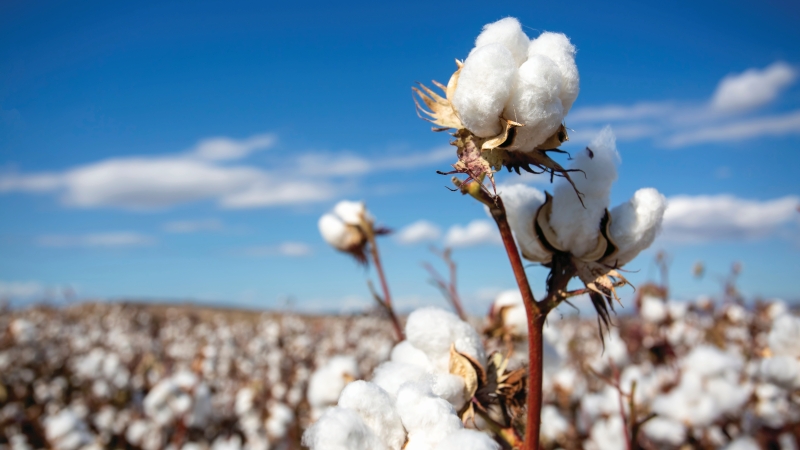Cotton Market is Ripe for a Rally
Cotton attempted to move higher during the week, but failed on Friday (December 5) to make a four day run of higher prices.
The market, trading at some 60 cents plus most of the week, settled slightly lower on Friday’s close at 59.64 cents, basis March. Boosted by solid export sales and shipments – as well as a USDA report from its Beijing office outlining why the official USDA forecast of Chinese ending stocks was as much as four to five million bales too high – prices approached 62 cents before faltering and fell below 60 cents.
The market will have to wait until next week when USDA releases its December supply demand report to see if the official report incorporates the suggestions of its office in China. With that backdrop, the market continues its range bound trading between 58 cents and 62 cents.
Since the prior long term support at 61/62 cents has been penetrated, that same level is now the overhead resistance, and the New York March contract will have to close above that level to trigger a short covering rally. Yet, until that resistance is broken and the breakout can settle above 61.50 cents, the 57.00 to 61.50 cent range will dominate as the market continues to consolidate within those price parameters.
Nevertheless, the market is ripe for a rally, as the seasonals suggest a price rally will be forthcoming in the December-January time frame. Additionally, the speculative funds are historically oversold, as speculative shorts are approaching levels not seen since some five years ago. Thus, a short covering rally could possibly be triggered sooner than later.
The current price consolidation activity with its 450-point trading range has proven to uncover excellent demand. Too, buying interest has been spread across 15 to 20 countries, indicating demand remains available for quality cotton.
Shipments have staged back-to-back weeks of marketing year highs or almost new highs. Export commitments for the marketing year are at 73 percent of the USDA annual estimate, compared to the five year average of 71 percent. Yet, the West Coast port difficulties and work slowdown is being closely monitored. Delivery dates are extremely sensitive to Chinese contracts. By contract and government decree, spinning mills can declare a late arriving delivery as null and void with no recourse to the seller.
Growers are increasingly moving cotton to the CCC loan program, further widening the shortage of quality cotton required by Asian/Subcontinent mills. Merchants have had to do more shopping and scrambling to locate available cotton at a time when mills have stepped up their requests and inquiries. The Chinese continue to withhold cotton from their strategic reserve, and the Indian government continues to purchase grower cotton to boost in-country prices paid to growers.
All of these factors work in unison to maintain the world price in the high 60’s and supporting the New York ICE contracts.
Yet, the most promising thoughts to me arose this week at a meeting where I was privileged to exchange ideas about the U.S. and world cotton situation and outlook with the major cotton analysts. The striking element to me was the absolute bearish sentiment by all sitting at the table.
One comment was, “Why is cotton not 50 cents?”
My answer was silence! I feared if I dare open my mouth that I would be mauled by multiple bears, over and over again. With all the paddling downstream, I am thinking it is time to set my oars in a different direction.
No doubt, the world is awash with cotton. Yet, the Chinese continue to send signals that they will sustain an orderly approach to moving cotton from their reserve and, therefore, not crash prices. Too, while none at that table agreed, most marketing firms believe Chinese imports – as they have done the past five years – will measurably exceed the current USDA estimate.
With record yields seemingly occurring year after year as a direct result of technology, growers are challenged to review their annual cost of production using current yields as the norm in calculating costs and returns. Doing so will enlighten some as to the true potential profitability of cotton.








